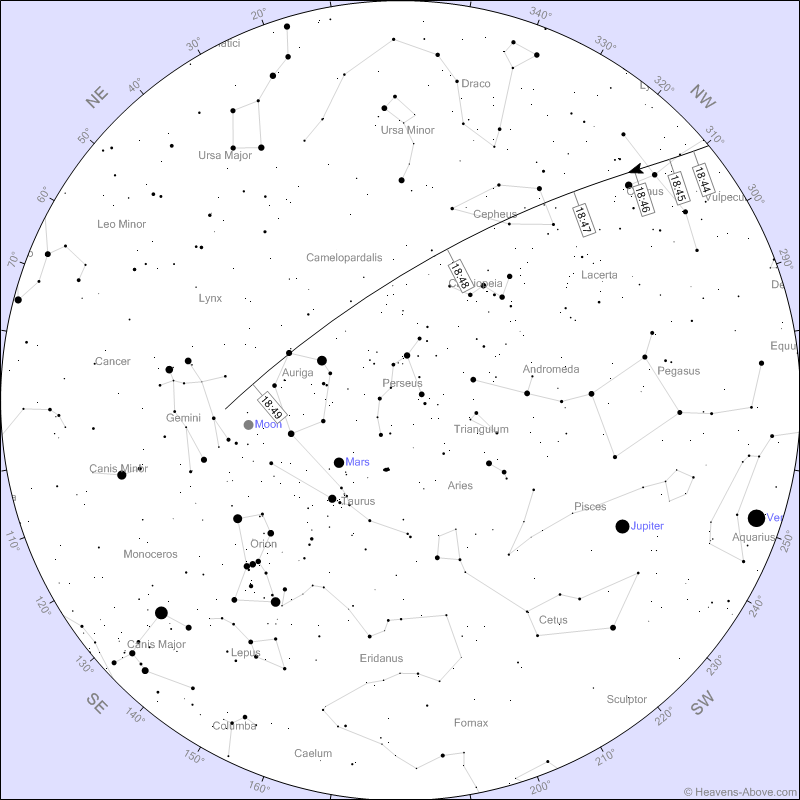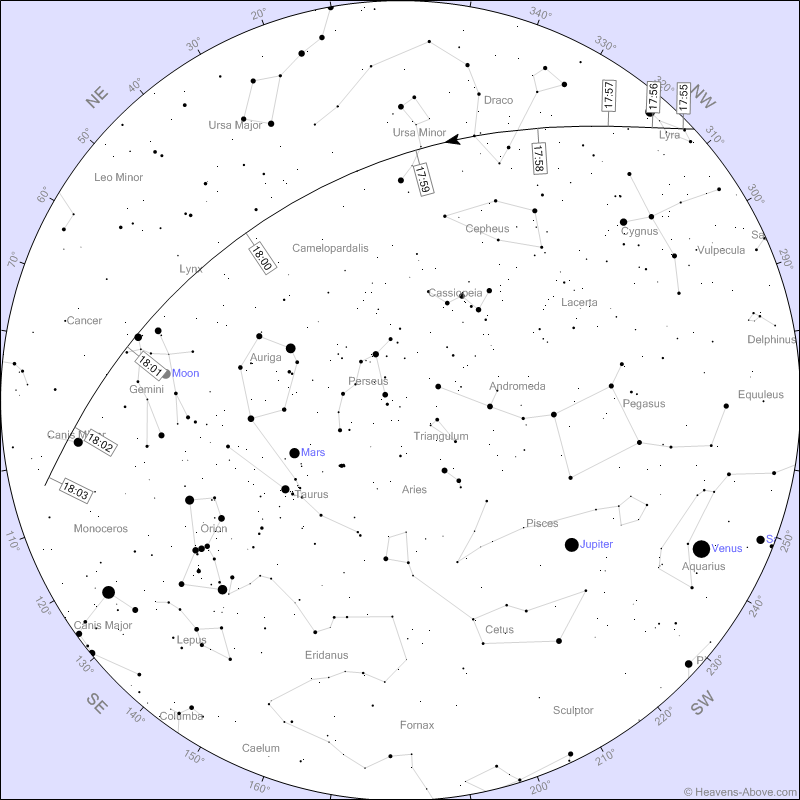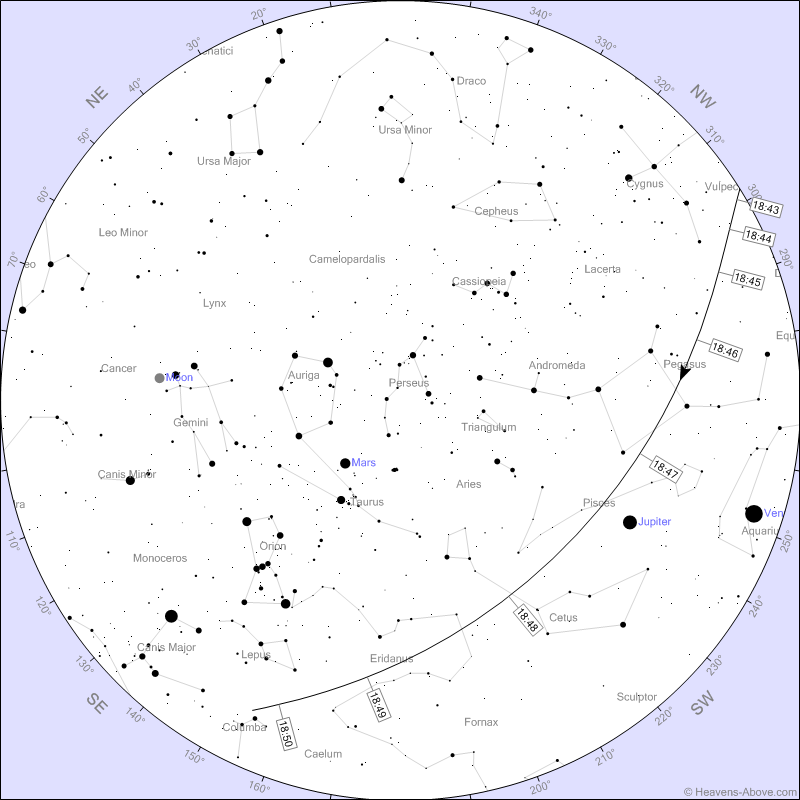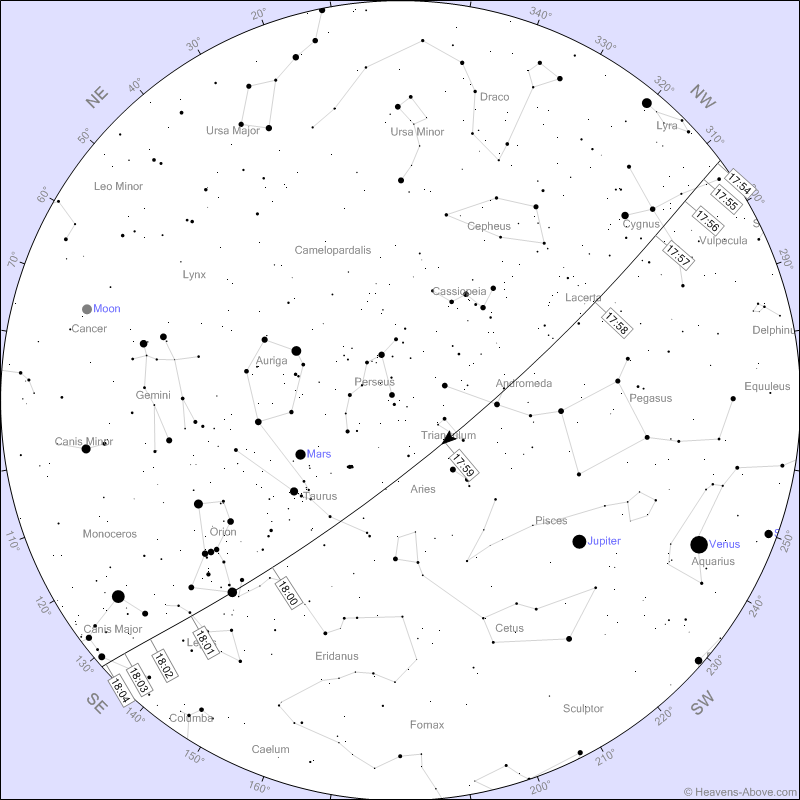Image credit: NASA/Roscosmos
The International Space Station (ISS) is returning to the evening skies with several bright passes over the Delaware Valley this weekend. Below we highlight the four best opportunities to #SpotTheStation this week.
The space station orbits Earth at an average altitude of 248 miles and circles the globe every 90 minutes. In one day, it orbits the Earth 16 times, traveling through 16 sunrises and sunsets!
February 1 - 6:45 pm
The best pass is tonight, February 1, when the ISS passes high overhead. The ISS will rise in the Northwest at 6:43 pm, passing near Cassiopeia before disappearing at 6:49 pm. The ISS will first appear near the constellation Cygnus, the swan, passing next to the bright star Deneb before passing Cassiopeia, the queen. Finally, it passes Capella in Auriga, the Charioteer, before disappearing near the Moon and Gemini, the twins.
At its brightest, the station will appear almost as bright as Venus at magnitude -3.8. Brightness is measured on a reverse logarithmic scale. The brighter the object is, the lower its magnitude number. For example, the Sun is magnitude -27, the full moon is -13, and Mercury's average brightness is 0.23. The average naked eye limit is magnitude 6.5.
While you're out looking, be sure to look for Comet C/2022 E3 (ZTF) in the north. It reaches perigee today, its closest approach to Earth, and will be at its brightest.

Details:
| Event | Time | Brightness |
| Rises | 18:43:04 | 0.7 |
| Maximum Altitude | 18:48:11 | -3.8 |
| Enters Shadow | 18:49:10 | -3.7 |
February 2 - 5:56 pm
The next pass will begin at 5:54 pm on Thursday, February 2. The ISS will rise in the Northwest, passing through the northern sky between Draco and the Little Dipper. Look for it rising in the northwest by Vega, the brightest star of Lyra, the harp. It then passes through Draco, the dragon, and the handle of the Little Dipper. At the end of its path it will pass very close to Castor and Pollux, in Gemini, the twins. It disappears into Earth's shadow near the bright star Procyon in the Little Dog.
At its brightest, the station will be brighter than Jupiter at -3.2

Details:
| Event | Time | Brightness |
| Rises | 17:54:23 | 0.5 |
| Maximum Altitude | 17:59:46 | -3.2 |
| Enters Shadow | 18:03:12 | -1.4 |
February 3 - 6:44 pm
Another very bright pass of the ISS occurs around 6:45 pm on Friday, February 3. The space station will rise in the West-Northwest passing towards the Southeast before entering Earth's shadow below the constellation, Orion, the hunter. It will reach maximum brightness near Jupiter.
At its brightest, the station will be a little brighter than Jupiter at a magnitude of -2.5.

Details:
| Event | Time | Brightness |
| Rises | 18:42:22 | 0.9 |
| Maximum Altitude | 18:47:43 | -2.5 |
| Enters Shadow | 18:50:26 | -1.4 |
February 4 - 5:55 pm
The last and second brightest of the passes will begin at 5:53 pm on Saturday, February 4. The ISS will rise in the Northwest in Cygnus, the swan. It will pass almost directly overhead, in front of the bright star Rigel, in Orion, the hunter, before setting in the Southeast near Sirius, at 6:04 pm.
At its brightest, the station will be nearly as bright as Jupiter at magnitude -3.6.

Details:
| Event | Time | Brightness |
| Rises | 17:53:34 | 0.7 |
| Maximum Altitude | 17:59:01 | -3.6 |
| Sets | 18:04:27 | -0.3 |